- Home
- J. M. LeDuc
Painted Beauty (2019 Edition) Page 5
Painted Beauty (2019 Edition) Read online
Page 5
Evelyn smiled. “I’ll just borrow the pot from Jack’s office.”
Sin laughed. “It’s good to have you on board.”
Evelyn agreed, and then looked at Sin’s backpack. “I don’t mean to be nosey but your phone seems to be vibrating non-stop.”
“That bastard, Rand, gave out my cell as the hotline number. I’m just letting everything go to voicemail.”
Evelyn put out her hand, palm up, and wiggled her fingers. “Why don’t you leave that with me, I’ll go through the voicemails, and have a new phone waiting for you when you get back.”
Sin didn’t know whether to hug her, jump for joy, or both. Not wanting to look like an idiot, she just handed her phone over along with its password, and gave the woman an awkward hug. “Thank you,” she said, “I was about to shoot it and put it out of its misery.”
“Get out of here,” Evelyn said. “You don’t want to keep Quincy waiting.”
Sin noticed a familiarity in Evelyn’s tone when she mentioned Quincy. “Just how well do you know Dr. Howard?”
Evelyn blushed. “We girls need to have a beer, and I’ll tell you some stories about Quincy.” She shooed Sin away. “Tell him Eve said hi.”
The appearance of Evelyn made Sin feel less alone.
And forty minutes later, she rolled up to Quincy’s office.
10
Sin and Quincy didn’t speak for very long. They discussed the toxicology results—Chloroform had been used to subdue the victim. It was the only drug found in the woman’s system. While she was at the ME’s office, Evelyn called.
The victim had been identified.
Her name was Vivienne Spinner, and she was an art student at ASPB—the Art School of the Palm Beaches. The college was located in Delray Beach, a seventy-minute ride north of Miami off Interstate 95.
Sin contacted the Palm Beach Sherriff’s Office and had them secure both Vivienne’s residence and car. She asked that no one enter either until she was on the scene. She then called the school’s director, Joan Wright, and arranged a meeting for later that afternoon.
After a whirlwind of a morning, Sin was back on the road and pointed north. Her first stop was an apartment building in the downtown area of Delray. Exiting I-95 at Atlantic Avenue, Sin soon found herself in the Art District—a renovated part of downtown between the interstate and the beach—the perfect location for an art college.
Sin rode onto North Swinton Avenue and found the Delray Arms Apartments. It didn’t take a rocket scientist to find the address. Cruisers were parked out front.
Riding up to an officer standing in front of the building, Sin identified herself and asked where to park. She was pointed to a shopping center adjacent to the residence.
She parked, stepped off her bike, and wiped the sweat from her brow. Another officer walked toward her from the opposite direction. The two officers merged and were close enough for Sin to hear them. The new one was loud and exuded a full tank of testosterone.
“If coeds looked like that when I was in college, I would have stayed in school a while longer,” he said.
As she approached the two cops, the officer she had met nodded.
The new one came closer and stared at her badge, which hung from her neck. He stared at her chest a little too long for Sin’s liking.
“When you get finished leering, Officer Slimy, I would like to know who the ranking officer on the scene is, and where I may find him or her.”
The first officer laughed at Sin’s comments. “Don’t mind Leroy,” he said. “He’s new to South Florida. Stems from the sticks of Kentucky and he’s still getting used to the women down here.”
Sin shot Leroy a look of disgust and then smiled at the other. “I don’t think I caught your name.”
“Officer James Rooney,” he said, “and this is my partner, Leroy Sansmire.”
Sin just nodded in the general direction of Leroy and then looked back at James. Taking the subtle hint, he pulled out a card. “Sergeant Glenn. You’ll find him just inside the building.”
“Thank you,” she replied. Pulling her sunglasses down over her eyes, she walked over to the apartment building. She weaved her way through other officers and was about to open the door when it was opened for her. A six-foot, five-inch granite slab with a face and form darkened the doorway.
“I’m Sergeant Maurice Glenn. You must be Agent O’Malley.”
“I am,” she said, holding out her hand. Glenn wrapped his catcher’s mitt-sized paw around hers.
Leading her down the hall to apartment four, he handed Sin a key. “This is Vivienne Spinner’s apartment. I took the liberty of securing a key from the landlord. We have also obtained a list of all the residents.”
Sin lifted her sunglasses from her face and clutched the key. “Thank you, Sergeant. I appreciate your initiative.”
About to put the key in the lock, she noted the residue left behind from the dusting of prints. “Any usable prints.”
“One set. Being processed.”
One set, Sin thought, that’s unusual.
Sin pulled a pair of latex gloves from her backpack, opened the door and viewed the apartment from the doorway. It appeared to be a typical college student unit—small and compact. Noticing that her orders were followed and no one had yet cleared the apartment, she asked where the crime scene investigators were.
“They’re outside dusting Ms. Spinner’s car. Should I have them come in?”
“Give me twenty minutes to do a walk-through and then send them up.”
“Will do,” Sergeant Glenn said. About to walk out, he turned and faced Sin. “Anything you can tell me about the case?”
Sin stopped, looked at Glenn, and realized she hadn’t said much of anything to this point. She dropped the tough girl attitude and grinned. “I’m afraid there’s not much to tell. The body found in Miami was identified and traced to this location. I’m just hoping to find something here that might lead to why she was killed or better yet, her killer.”
Glenn nodded. “Sort of like searching for clues in the desert, and we both know how hard that can be.”
His words caught her off guard. Sin hesitated, then agreed. “Yeah, looks like I drew the short straw.”
Glenn laughed. “I’ll be just down the hall if you need anything.”
Pulling a pair of paper booties from the side compartment of her backpack, Sin donned the gear and entered the vic’s home.
The preliminary search didn’t take long. The apartment turned out to be an efficiency—kitchen, bathroom, and bedroom. She found the normal things you would find in a college student’s home: textbooks, laptop, and packages of Ramen noodles. The extras that let her know she was in the apartment of an art student: easel, paints, and partially finished paintings and sketches. On top of the small desk in the corner of the bedroom was a large, hardcover book titled, The Life and Art of Miranda Stokler. Sin fanned through and opened to a page of colored photos. It didn’t take a trained eye to notice that Vivienne’s work was very similar in style to Miranda Stokler’s.
As she compared the two, there was a knock on the door. She turned to see three investigating officers standing there awaiting her words.
The first breathed deep, relaxing his posture, “Whew, that’s a relief.”
“What’s a relief?” Sin asked.
He pointed to her feet. “The booties and gloves. You’d be surprised how many times we’ve had a scene compromised.”
No, I wouldn’t.
Sin walked over, stepped outside the apartment, introduced herself, and shook the hands of the investigators. “I would appreciate it if you can have Ms. Spinner’s computer, books, and artwork sent down to the FBI’s Miami Beach field office as soon as you secure the scene.”
“Not a problem,” the investigator said.
“What did you find in the car?” Sin asked.
“We were told not to enter,” he replied, “but there was no sign of a struggle on the outside. Just typical things you would find on the car of a coll
ege student. Dirt and dents.”
Sin nodded and extended her hand. “Sorry, but I didn’t catch your name.”
“Jim Dugan,” the investigator said, shaking Sin’s hand and placing a business card in her palm at the same time.
“Interesting backpack,” Jim pointed. “Were you in the military?”
“I started out in the Marines but the FBI pulled me away.”
“Oorah,” Jim replied. “No wonder Sergeant Glenn likes you.”
“I never told the Sergeant I was a Marine.”
“You didn’t have to,” Dugan said, “he can smell one from miles. I guess that’s what comes with being a career soldier.”
“Yeah, I guess so.”
Sin’s watch alarm began to beep. She looked at the time. “I have an appointment to get to. Would you mind clearing the auto and bagging all her belongings for me?”
“Consider it done.”
Sin thanked him and then went to speak to Sergeant Glenn who was now standing across the street having a cigarette.
“Mind if I join you?” she asked.
“Not at all. It’s a damn shame we have to stand next to a freakin’ dumpster just to have a smoke.”
“It’s the price we pay for our vice,” Sin said, lighting up.
“Yeah, I suppose.”
“Listen, Sarge, I need to head out. I’m not sure how much of this case will take place up here in Delray, but I sure could use your help with this part of the investigation.”
Nodding, he flicked his butt onto the pavement. “Anything for a Marine,” he said.
“Oorah,” Sin replied.
11
The Art School of the Palm Beaches was only a few blocks away from Vivienne Spinner’s apartment. The parking lot of the school was packed with cars. Mostly a commuter college, Sin thought.
She took in the sights, sounds, and smells of the small, grotto-shaped campus as she headed toward the administration building. The students were an eclectic blend of late-teens/early-twenties, most showing a fair amount of ink and piercings—bohemian in appearance—just the type you would picture as being the student body of an art college.
Upon entering the administration building, Sin noticed paintings, drawings, and sculptures lining the halls. A quick survey didn’t turn up any by the deceased.
Sin was ushered into the office of the director, Joan Wright, as soon as she introduced herself to the receptionist.
“I was shocked to hear what happened to Vivienne,” Joan said, even before Sin had a chance to sit down.
“You knew her personally?”
“Well, no. I mean, no better than I know any of the other students.”
Sin sat in a chair across from Joan. “Come again? I’m not sure I understand.”
“Let me explain,” Joan said. “I’m a little jittery with everything that’s happened, and I am probably babbling.”
“No probably about it,” Sin said.
Joan regained her composure and began anew. “ASPB is a small, private art college. I make it my mission to meet all of our students upon admission and try to cultivate a relationship with all of them.”
“And Vivienne, did you cultivate one with her?”
“That’s the strange thing—actually, only one of the strange things—about Vivienne Spinner. She was very much a loner. I’d be surprised to hear that she cultivated a relationship with anybody on campus.”
Sin asked a few more questions about the student population and ASPB, before standing and readying to leave. “The artwork in the hall, I assume it was all created by the students?”
Joan nodded. “We are very proud of our students’ accomplishments and like to display their hard work. Each semester the faculty chooses the best pieces and we hold an exhibit.”
“Do any of the pieces belong to Ms. Spinner?”
Joan shook her head. “Another peculiar thing about Vivienne. She was an exceptional talent, but every time one of her paintings was chosen for the exhibit, which was every semester, she declined.”
Sin pondered the statement for a moment. “I would like a list of all of Vivienne’s professors as well as her classmates.”
Joan lifted a file off her desk and handed it to Sin. “I thought you might ask so I had one prepared for you.”
Sin thanked Joan and was about to leave when she stopped and turned back around. “I noticed a book in Ms. Spinner’s apartment, The Life and Art of Miranda Stokler. Do you know who that is?”
Joan smiled. “That helps better explain where Vivienne’s influence came from. Miranda Stokler was a local artist—Miami, I believe—who became very popular after her death.” She paused, tapped her keyboard, and kept talking without making eye contact. “I didn’t realize any of our students were fans, but having seen Vivienne’s work, it certainly makes sense. Here you go,” she said, jotting something down on a sticky note. “The address of the Stokler Gallery on Atlantic Avenue. It’s just before the bridge heading toward the beach on the south side.”
Sin pocketed the address, tucked the file under her arm, and walked back the way she came.
Spending the next couple of hours speaking to Vivienne’s art teachers and fellow students, Sin was surprised by the parroting of feelings she found. Every teacher said the same thing: She was very talented, but a loner. Every student said the same thing: They knew who she was, but weren’t friends. In fact, most had never even spoken to her.
It was almost dusk when Sin rode up to the Stokler Gallery.
12
While Sin was busy in Delray Beach, Ash was busy down south.
He had been trolling the Art District of Miami, better known as Coconut Grove. Although he noticed everybody, no one seemed to even glance his way. One of Ash’s best features was that he was indistinguishable. Not tall or short, fat or thin, handsome or ugly; he blended in with his surroundings. A neutral pallet, she would have called him.
The streets and sidewalks were busy with tourists and locals alike. The Grove was popular with all age groups. The younger generation liked the restaurants and bars, while the older generation enjoyed its art studios and shops. Everyone loved its laid back atmosphere. It was the type of place where you could imagine Hemingway or van Gogh spending their time mulling over ideas.
But Ash wasn’t there to socialize or to stroll the shops; he had come with one purpose in mind—to find his next canvas.
“The great thing about these artsy types is that they’re a bunch of misfits.”
Ash squinted painfully at the irritating rasp of her voice. Why is she here? he thought. I don’t need her.
He walked into a coffee house, ordered a le plus grand French roast and sat at an art-deco table. His eyes searched for a canvas. As he pulled his laptop out of a messenger bag, he subconsciously repeated the same sentence he had been saying since he left his house—jealousy a human face.
He pretended to be working on his laptop, but was actually snapping pictures of customers—with the internal camera—as they waited in line.
Two large cups of coffee later, he was ready to pack up when a beauty stepped inside. She appeared to be in her early twenties, with mousy, shoulder-length, dirty-blonde hair. She was dressed in baggy jeans, t-shirt, and a pair of Birkenstock knockoffs, and was carrying groceries in a ‘green’ bag, as well as a large canvas tote hanging from her other shoulder.
“Jesus-shoes wearing freaks. She looks like a good prospect. Follow her.”
Ash squeezed his hand into a fist, held it tight until he began to lose feeling, and then relaxed. He repeated that maneuver until his temper died down.
I don’t need advice. I know a prospective canvas when I see one.
He packed up his computer, walked outside, and pretended to look at the menu taped to the café window next door while he waited.
His wait was short. She opened the door with her shoulder, never looking up or making eye contact with anyone. Three boisterous college students plowed through the other door, bumping into her and nudging h
er out of their way as if she were invisible.
Head down, she never saw the assault coming and lost her balance. Ash jumped to her rescue and wrapped his arms around her frail frame as she fell. His contact made her jump, and she spilled her coffee on his shirt.
“I didn’t mean to scare you,” he smiled. “I just didn’t want you to fall and get hurt.”
She looked sheepishly at his face and quickly downcast her eyes to his arm. “Tha—thank you,” she stuttered. “I’m sorry about your shirt. I hope you’re not hurt.”
Ash glanced down at his shirtsleeve and lifted the wet, coffee-stained spot away from his skin. “Nah,” he smiled, “it’s an old shirt anyway. I usually just wear it when I paint. Can I help you with your things?” Ash asked, holding out his arms.
She shook her head vigorously. “No, thank you. I live right there,” she cocked her head in the direction of an old, Spanish-style mansion that had been retrofitted into apartments.
“Are you sure? You seem to have a lot of bags, and I know those old buildings don’t have elevators.”
Eyes pointed to the ground, she elicited a slight smile. “I’m fine, thank you anyway.”
She flicked her eyes up toward Ash and gave a glimmer of a half-smile before ambling on her way.
Ash hung back, but when she crossed over at the end of the block, he followed. From across the street, he could see her stop at the small bank of mailboxes, open the first box on the bottom, check for mail, and then continue into the building.
The corner of Ash’s mouth rose and quivered. His anticipated victory had him dreaming of how he would attack his next project.
He crossed the street, checked the apartment number that corresponded to the mailbox, and quickly walked away.
There was a lot of preparation to be done before he could be sure she was the right one.
But if everything worked out as Ash hoped, he’d soon be back for his new, beloved canvas.
13
Sin entered the Stokler Gallery, flashed her badge, and asked to speak to the proprietor.

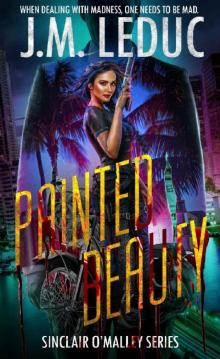 Painted Beauty (2019 Edition)
Painted Beauty (2019 Edition) Sin (2019 Edition)
Sin (2019 Edition) Evil Awakened (The Kiche Chronicles Book 1)
Evil Awakened (The Kiche Chronicles Book 1) Cornerstone
Cornerstone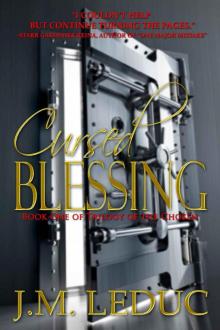 Cursed Blessing (Trilogy of the Chosen Book 1)
Cursed Blessing (Trilogy of the Chosen Book 1) Cursed Presence (Trilogy of the Chosen Book 2)
Cursed Presence (Trilogy of the Chosen Book 2)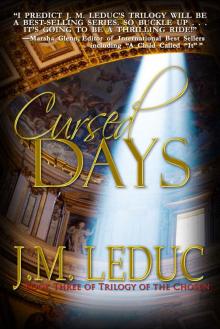 Cursed Days
Cursed Days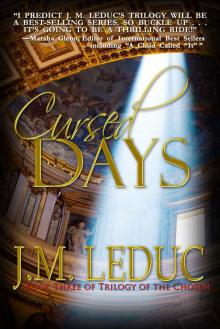 Cursed Days (Trilogy of the Chosen Book 3)
Cursed Days (Trilogy of the Chosen Book 3)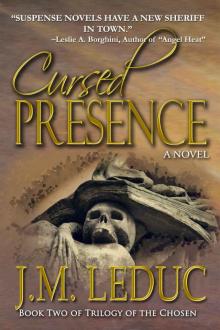 Cursed Presence
Cursed Presence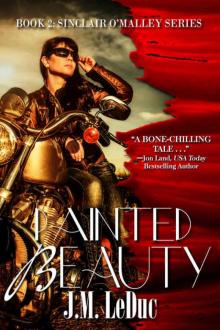 Painted Beauty (Sinclair O'Malley Book 2)
Painted Beauty (Sinclair O'Malley Book 2) Sin (Sinclair O'Malley Book 1)
Sin (Sinclair O'Malley Book 1) Evil Awakened
Evil Awakened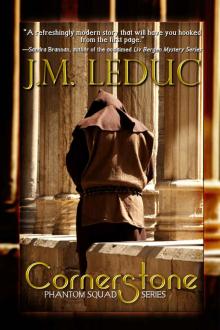 Cornerstone (Phantom Squad Series Book 1)
Cornerstone (Phantom Squad Series Book 1)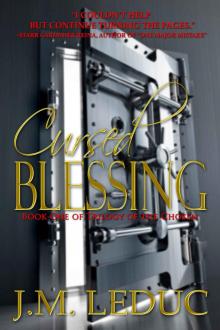 Cursed Blessing
Cursed Blessing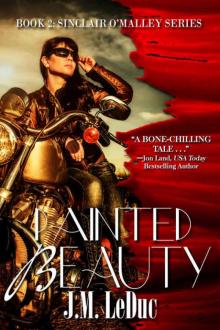 Painted Beauty
Painted Beauty